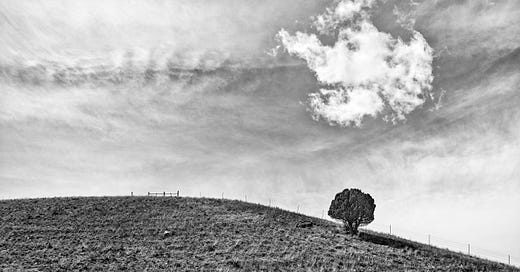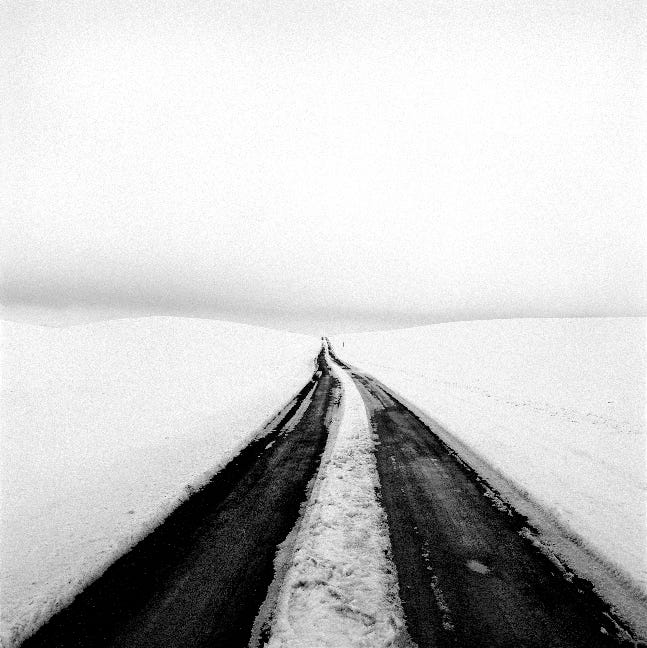The chorus: Jeff Corwin, World Renowned Commercial Photographer, Captivates The Art World With His Fine Art Photography! And Corwin’s modest refrain: Simple shapes. Graphic lines. Eliminate clutter. Light when necessary. Repeat.
Corwin’s approach to his poignant fine art photography sounds unassuming, but it belies the rigorous aesthetic he harnesses when aiming his lens. The art and design principles of balance, rhythm, pattern, emphasis, contrast and unity are the solid foundations buttressing his creativity. His seamless and successful transition into the fine art world is in large part due to the same exacting vision he used for his commercial work.
Over the years, Corwin has taken photos hanging out of a helicopter over the Thames River, in the jungles of Borneo, on oil rigs in the Gulf of Mexico and on the Italian aircraft carrier Garibaldi while photographing Harrier Jet missions over the Tyrrhenian Sea for Rolls-Royce. He has done photo shoots in 41 countries/5 continents, including in Moscow with two retired KGB agents with AK-47’s accompanying him and Belfast, Northern Ireland in the mid-80’s. Assignments included portraits of famous faces, including Bill Gates, Cesar Chavez, Ray Bradbury, LA Police Chief Daryl Gates, Michael Graves and Gloria Allred, and photos for corporate clients like Microsoft, Dell, Apple, Boeing, Lockheed, AT&T and Time/Life. His hottest photo shoot: Abu Dhabi at 114 °F. The coldest: Flin Flon, Manitoba, Canada at -40 °F.
The seeds were sown for his shift into fine art work years ago during an assignment in the sparse eastern part of Washington State. As Corwin drove east from Seattle, the topography transformed from the lush western hills, mountains, rivers and lakes to the central plains that then gave way to rolling hills and rich volcanic soil. The transformation was palpable. He began to recognize the things that were a visual trigger for him. A black asphalt road cutting for miles through harvested wheat. An empty, snowy field with a stream curving to a single tree. A small barn, the roof barely visible above a barren hillside. His visceral reactions to the landscape corroborated what he always felt was one definition of photography - a recognition of what personally resonates, defined by experience, spirit and instinct.
For more than 40 years, Corwin dazzled the world with his spectacular commercial photography. His commercial work won many prestigious awards and garnered vast international media coverage. 25 years ago he began to shoot his personal fine art landscape work. Now he has turned his discerning eye to fine art photography exclusively and the art world has taken notice. London’s LandEscape Art Review is presenting a major feature article on his work and his shift in focus. He is also currently exhibiting in several important contemporary galleries throughout the western United States. Corwin’s recognition in the fine art world is growing daily.
To appreciate Corwin’s creative approach, a glimpse into his career in commercial photography is illuminating. During his years shooting for ad agencies and graphic design firms with corporate and industrial clientele, he developed a way of seeing that not only worked for his clients but pleased him as well. His photographic focus was on corporate offices, factories, oil refineries and aerospace companies. He had to work with whatever mundane objects were present at a location. He viewed his job title not as “photographer,” but actually problem solver. Profiles and forms that repeat, like ceiling patterns from fluorescent lights or rows of desks or chairs, created found opportunities for Corwin. It became second nature for him to walk into a new setting and look for these features.
He developed a style that helped him to see past the muddle and create photographs that were more design than immediately recognizable objects. For Corwin, simplicity, graphic shapes, strong lines or repetition in contours are what “do it” for him visually. He cites Piet Mondrian, with his masterful abstract paintings using colors, shapes and textures to achieve their effect, as an inspiration.
As a commercial photographer, often one has to adhere to the client’s vision. Fortunately for Corwin, due to his renown, impressive portfolio and reputation for being sent into hell-holes and bringing bring back the goods, he was given abundant creative independence. While the world of photography is seemingly divided between commercial photography with a primary focus of advertising products or services and fine-art photography, the goal of which is to express an idea, a message or an emotion, Corwin was able to straddle the two – providing a visual account of specific subjects through the use of an artistic lens.
Some of Corwin’s august predecessors and contemporaries got their start as commercial photographers, as with famous photographer Robert Frank before he turned his attention to street photography and photojournalism. Though prominent photographer David LaChapelle’s aesthetic is quite different from Corwin’s, he is also a photographer that intersected the line in his commercial and fine art work. The renowned photographer Weegee’s black and white street photography distinguished him, yet he developed his signature style while working as a press photographer in the 1930s and 1940s.
For Corwin, the result of shooting commercial photographs: a refinement of his discriminating eye to create unique concept-driven imagery. So when he began his fine art photography, he felt he did not have a choice – observation and scrutiny were second nature to him. His present work is 100% informed by his experience shooting for clients. His well-honed techniques tapped in his commercial photography, techniques that were seemingly rule-breaking, such as using semi-abstract subjects, creative editing and defying composition rules, now serve him well. And happily so.
In his fine art photography, the autonomy to depict imagery of his choice has not thrown Corwin at all, for he is well-versed in seeing what he needs and wants to see. His goal is not to demonstrate his technical skills. His inventory of expert skills that he draws on are what allow him to comfortably create photos aligned with his personal vision and desire to express an idea or an emotion or conceptualize a metaphor.
Corwin’s process involves shots from a variety of angles. He is not averse to artificially lighting subjects by bringing powerful strobes into the scene, even landscapes. Graphis Magazine once quoted Corwin as saying, “It’s amazing how much time I spend lighting, just to get things dark enough.” This augmentation stays true to the essence of the scene while heightening the surface tension. Famed photographer Charlie Waite started in theater and design and it was the lighting production that inspired him and made him one of the most famous landscape photographers.
Like the Romantic painters of the 19th century, who used lush landscapes to represent deeper philosophical notions, landscape photographers are often portraying far more than arresting terrain. A key work from the Romantic period, Caspar David Friedrich’s The Wanderer Above the Sea of Fog, is described as conveying the awe-inspiring and sublime characteristics of nature. Corwin wants viewers to look at his emotive photos, hesitate a moment and then ask questions.
When Corwin ponders why his landscapes look the way they do, he rejects the notion that it is the location of shoots in Eastern Washington State, Montana and New Mexico that drive the scenarios. Instead, the scenes he chooses to photograph look the way they do because of what is inside of him. He gravitates to the bleak, lonely and isolated vistas because they speak to him; it is what he sees because it is what he feels. Corwin admits that he possesses a “glass half empty” personality that draws him to the desolation of landscapes. It calls to him and he viscerally reacts to it.
Corwin appreciates the artistry of Edward Hopper, the realist painter of twentieth-century America. Hopper was selective in his vision, reflecting his own temperament in the empty cityscapes, landscapes, and isolated figures he chose to paint. Hopper was a master of light, often depicting cold, bright, and intense light, natural and man-made, that could be merciless. As with Hopper, Corwin is focused on the introspective aspects of what we see.
Recently called out on this “negativity,” Corwin contemplated what would happen to the imagery he enjoys creating if he tried to navigate his approach towards something more archetypal, towards the celebration of the glory of mountains and beautiful meadows and late afternoon light. He wondered if he would end up with, in his words, “sparkly, saturated photos,” the antithesis of the powerful stark tones of his characteristic images that undergird his subjective expression. He experimented and attempted to go against his instincts within certain bodies of work; it has yet to be creatively satisfying.
Yet he is continually curious and experimental. While his mainstay at present is landscape photography, he has rich bodies of work that go in other directions, such as two portrait series, Farm Workers and American Architects, and his Guns in America series – mini indoor installations which rely heavily on props, sets that he built and harsh light with tweaked and intense saturated colors.
He is also undertaking color in his landscapes. After decades of photographing in black and white, his initial forays into color photography were disappointing to him. A problem solver, he rose to the challenge. He began to search for a solution and landed on a technique that is more painterly and interpretive, with colors muted and shifted in temperature, yet the character of the photographs remains the same.
Corwin's self-admitted "glass half empty" is rapidly filling to the top. A full glass. There is no other way to describe it.
Artist website: https://www.jeffcorwinfineart.com/
FOR MORE INFORMATION ABOUT THE ARTIST, PLEASE CONTACT:
ARTWORKinternational INC
Samantha Paige Furgason, President
Santa Fe, New Mexico USA
1 505 / 982 7447
sam@artworkinternational.com
www.artworkinternational.com






